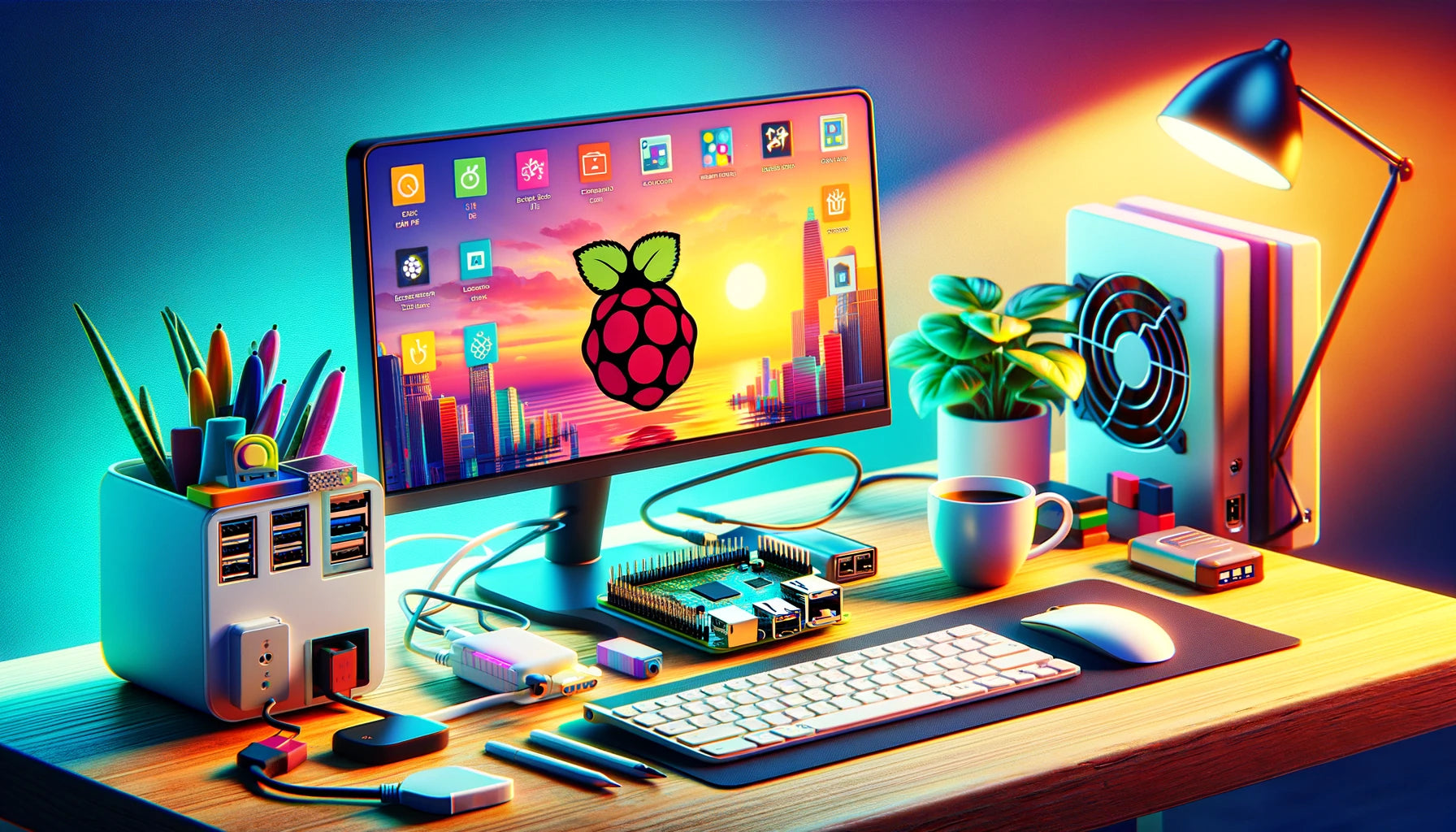Menu
Logo

Ready to revolutionize your computing experience with Raspberry Pi 5? Whether you're a first-timer or a tech aficionado eager to upgrade, the Raspberry Pi 5 stands as a powerhouse for all your daily digital needs—from internet surfing to multimedia enjoyment. In this quick guide, we're unpacking everything you need to maximize your Raspberry Pi 5 setup for work, play, and everything in between. Excited? Let's dive in!
At the core of your setup is, of course, the Raspberry Pi 5 itself. This latest iteration of the Raspberry Pi series boasts improved processing power, more memory options, and enhanced connectivity features compared to its predecessors, making it a powerful choice for everyday computing tasks.
To get started with your Raspberry Pi 5, you'll need a few key components:
Power Supply: A reliable 27W USB-C power supply to ensure your Raspberry Pi 5 runs smoothly without power interruptions.
MicroSD Card: A high-quality microSD card (16GB or larger recommended) serves as the primary storage for your operating system and files. Consider a Class 10 card for faster read/write speeds.
Case: Protect your Raspberry Pi 5 with a case. Not only does it safeguard your device, but it also helps with heat dissipation during intensive tasks.
HDMI Cable: To connect your Raspberry Pi 5 to a monitor, you'll need a micro HDMI to standard HDMI cable. Ensure it supports the resolution and refresh rate of your monitor for the best viewing experience.
Keyboard and Mouse: For navigating and input, any standard USB or Bluetooth keyboard and mouse will do. Choose devices that suit your comfort and workspace.
Heat Sink and Cooling Fan (Optional): If you plan on pushing your Raspberry Pi 5 with more demanding tasks or live in a hotter climate, consider adding a heat sink and cooling fan to keep temperatures in check.
Operating System: Start by downloading and installing Raspberry Pi OS from the official Raspberry Pi website. It's a user-friendly and versatile OS that's perfect for beginners and seasoned users alike.
Internet Connectivity: Connect to the internet via Wi-Fi or an Ethernet cable to browse the web, stream content, and download files. Raspberry Pi 5's improved connectivity options ensure a stable and fast internet connection.
Video Playback: For playing video files, VLC Media Player is a great choice and is available for Raspberry Pi OS. It supports a wide range of video formats and codecs, ensuring smooth playback of your favorite movies and shows.
Productivity Software: For regular computer work, the Raspberry Pi OS comes with a suite of productivity software, including a word processor, spreadsheet program, and presentation software. You can also explore additional software options through the Pi Store or by installing Linux-compatible applications.
External Storage (Optional): If you find yourself needing more storage space for files and media, consider adding an external USB drive or SSD. Raspberry Pi 5 can easily access and manage external storage devices, expanding your storage options.
Setting up your Raspberry Pi 5 for everyday computing is a straightforward process that opens up a world of possibilities. Whether you're working on documents, browsing the internet, or enjoying your favorite videos, the Raspberry Pi 5 is a cost-effective and versatile computing solution. Remember to explore the community forums and resources available online for tips, tricks, and support as you embark on your Raspberry Pi journey.
We hope this guide helps you get started with your Raspberry Pi 5 setup for regular computer work, internet, and video file playing. Happy computing!